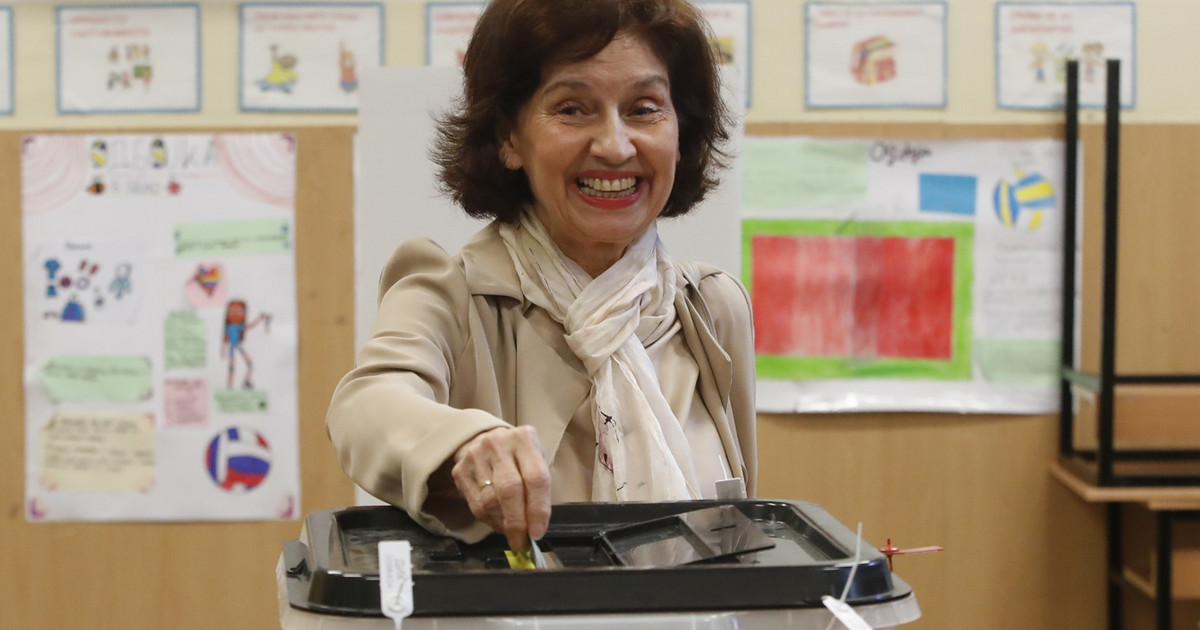The combination of the effects of the pandemic and the war in Ukraine should change the way countries conduct the so-called energy transition to combat climate change, say experts to the CNN Brasil Business .
The term refers to the process of change in the energy matrix of a country, more recently specifying the loss of space from polluting sources by green sources, such as wind, solar and hydroelectric energy.
This process, which is still recent, should gain new perspectives after the events of recent years, incorporating a term that has come back into fashion: energy security.
The International Energy Agency (IEA) released a report earlier this week in which it says coal consumption in 2022 will return to the highest level ever recorded in 2002.
The record comes as many countries seek to curb greenhouse gas emissions, with coal one of the most environmentally damaging sources.
In the same report, the IEA explains that the new level is linked to the change in posture of countries with the Covid-19 pandemic and the war in Ukraine.
For experts, the energy transition is not over, and it is necessary to avoid even more drastic changes in the global climate, but there is still no way of knowing how fast it will go after the two crises.
Transition safely?
The great paradigm shift for the transition, according to Adriano Pires, director of the Brazilian Center for Infrastructure and Energy (Cbie), came with the war between Ukraine and Russia, as it became necessary to reconcile climate concerns with energy supply. .
He says that the trend now is towards a “more secure transition”. “Fossil fuels have regained a certain prominence, and the current scenario shows that they were demonized too quickly.”
The economist hopes that countries will seek to build increasingly diversified energy matrices, including with fossil fuels, in order to compensate for the vulnerability of each type of source.
Renewables, for example, have intermittency as their main problem, with the generation capacity depending on factors such as rainfall intensity, wind and sun. Fossils, on the other hand, have risk factors involving price, supply and pollution.
“The world cannot give up any source of energy, not least because consumption is very unequal, and each source has an attribute. The challenge is to continue making the transition, but having security”, he opines.
Therefore, he considers that as long as renewable sources do not pass security of supply to countries, the use of fossil fuels will continue.
Edmilson Moutinho, a professor at IEE-USP, believes that the economic signals have been gradual, but in the direction of encouraging investments in other types of energy due to the jump in oil prices with the war and the pandemic.
This reaction, however, is longer-term, and diverges from the short-term efforts of countries. China, for example, turned to coal again when it was unable to meet the country’s demand via renewables and natural gas.
European countries, in particular Germany, have restarted thermoelectric plants powered by oil and coal while Russia withholds gas supplies, but they promise that the action is temporary.
“If oil remains high, the transition could gain momentum, serve as an incentive. Coal gained survival, but not in the long term. Oil gains survival, as a source as long as there is a feeling of insecurity, and gas gains survival longer,” she says.
In Moutinho’s view, natural gas is the non-renewable source most benefited by the new scenario. Because it pollutes less than oil and coal, it came to be seen as safe and important in the transition to renewable sources.
Even so, he affirms that countries’ views on climate change will not change, but rather incorporate energy and economic security issues. The tendency is for coal, gas, oil and nuclear energy to become sources of resolving insecurities, albeit temporarily.
Renewable sources, on the other hand, must still have leaps in efficiency and room for cost reduction, helping to encourage the transition. An important source in this process, still with few practical initiatives, is green hydrogen, which should play “a very important role”.
“Some think that hydrogen will be the oil of the future, but it seems that it will take a while. Natural gas is still the fastest and cheapest solution, and even though it is not ideal, it already provides a gain in pollution reduction, and can serve as a gateway to hydrogen”, he emphasizes.
Gesner Oliveira, a professor at FGV, considers that the war and the pandemic not only did not delay the energy transition but should also help to accelerate it, but with a different profile.
In the short term, countries will “use what they have”, including fossils, but in the meantime they will develop renewable projects as they become more and more attractive.
“What was attractive before the pandemic and the war became even more attractive, because it is clear that, even with high costs, given the level of oil, it pays to invest, even if the current price gives in”, he evaluates.
Oliveira also sees greater scope for natural gas, serving as a source of “transition in a process of combining the old and the new. It cannot simply exclude or stop certain investments, because it depends on them. It still has that dependency until renewables can replace everything.”
Another important point raised by the two global events, he says, is the change in the relative prices of polluting sources, especially oil, which have become more expensive.
“Countries tried to raise prices of fossils via taxes, but they failed, and the war managed to make that increase”, he says. This price change, according to the professor, should accelerate the transition.
Discover the types of renewable energy
before the crises
Moutinho says that the big change that the energy transition has brought so far is putting climate issues at the center of policies for the sector around the world.
The focus of the countries became, in some way, to encourage renewable energies and the abandonment of fossil fuels, whether through public policies, such as raising taxes for fossils and cutting renewable ones, or investments in research and innovation.
Even so, “each country followed its path, depending on its availability of natural and financial resources to have some way of encouraging the switch to other sources, even if energy temporarily became more expensive”.
European countries have become a reference in this process, betting on sources such as wind, solar, nuclear and even the promise of green hydrogen.
There was also a search for greater energy efficiency, that is, to make polluting sources emit fewer gases while maintaining the amount of energy produced or even increasing it, a path that has gained strength in the United States.
However, Moutinho believes that no country has managed to get close to the three countries with the greatest presence of renewable sources in their headquarters, Brazil, Iceland and Norway.
In this sense, the transition process had gained speed, with the alignment of world powers around the decarbonization of the economy, says Oliveira, from FGV.
The greatest symbol of this alignment, involving the private sector, was the Paris Agreement, at a time of “awareness of the climate emergency and the need to make the energy transition”. The result was a high pace of transition, with greater commitment.
The environment was one of “very rapid transition, and this also ended up influencing company investments. Oil companies stopped investing what they used to in expansion and oil production”, says Pires.
As a result, the world seemed to be moving towards a faster process of replacing sources, even if this would lead to more expensive energy in the short term. After the events between 2020 and 2022, this should no longer be the case.
Stones in the middle of the way
Oliveira believes that the spread of Covid-19 was a shock that immediately became the focus of countries, to the detriment of topics such as transition.
Still in 2020, low demand with lockdowns and uncertainties brought down oil prices. The scenario, however, reversed in 2021, with the commodity reaching US$ 80 with a mismatch between supply and demand and disorganization of chains.
“The pandemic has intensified the reduction of investment in fossil fuels, and demand has been at a greater speed than renewable sources can supply. Then it was necessary to resume projects with fossils to respond to the shortage of supply”, he explains.
This scenario was worsened by the war, with the oil problem going beyond low investment and moving to direct supply cuts, especially in the relationship between Russia and Europe. With that, the commodity surpassed US$ 120 for the first time since 2008.
Pires also notes that the Organization of Petroleum Producing Countries (OPEC) and its allies set production quotas during the pandemic that helped keep supply low and made prices rise.
“The war turned this event of rising fossil prices into the biggest energy crisis the world has experienced so far, the glass has overflowed”, he says.
In the view of the Cbie director, if before countries only looked at transition, the war meant that many of them also needed to face the issue of security of supply, “and fossil fuel provides security, because it does not depend on nature” .
Moutinho believes that the scenario for 2020 is different from that of 2021. In the first year, the cheap price of oil encouraged its use at the expense of more expensive sources, cooling off investments in renewables.
In the following year, the price of oil could favor cheaper sources, but the situation of insecurity prevented the movement, as fear made the countries seek security. If in finance, “security” is the dollar, in energy, it is oil.
Another problem that the rise generated was political pressure for fuel price cuts, driven by oil, resulting in tax cuts.
“This goes against the idea of energy transition, whose idea is to make oil more expensive to encourage other energies, and ends up reducing cash to subsidize other sources”, he says. With that, the combination created the “worst of all worlds” for the transition in the period, facilitating the use of fossil sources.
“Caution on the subject has returned to what it was in 2008. The transition and choice of sources now depends a lot on emotions, leaders and people, but the pressures continue”, he emphasizes.
Source: CNN Brasil
I am Sophia william, author of World Stock Market. I have a degree in journalism from the University of Missouri and I have worked as a reporter for several news websites. I have a passion for writing and informing people about the latest news and events happening in the world. I strive to be accurate and unbiased in my reporting, and I hope to provide readers with valuable information that they can use to make informed decisions.






